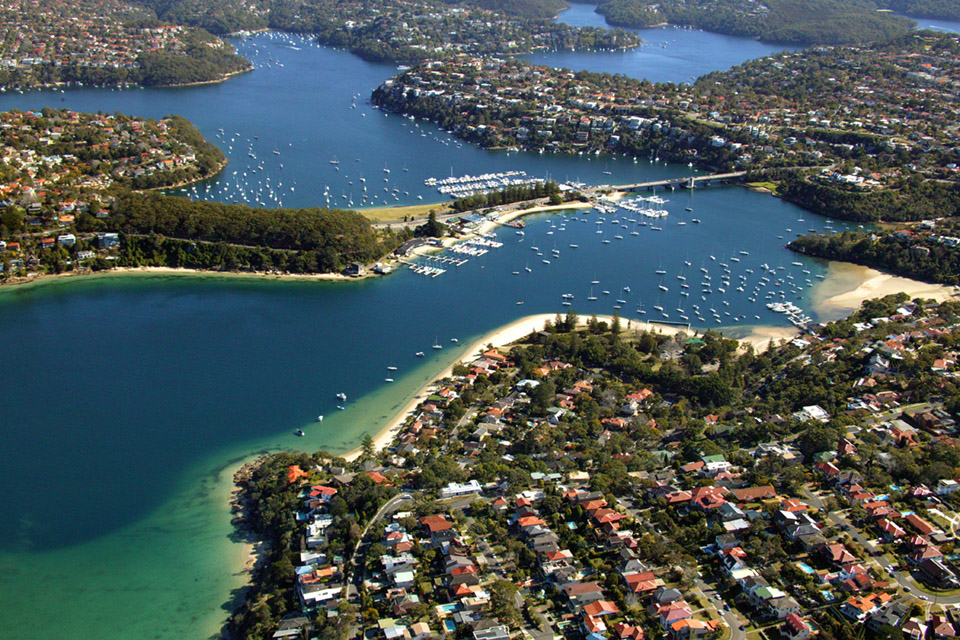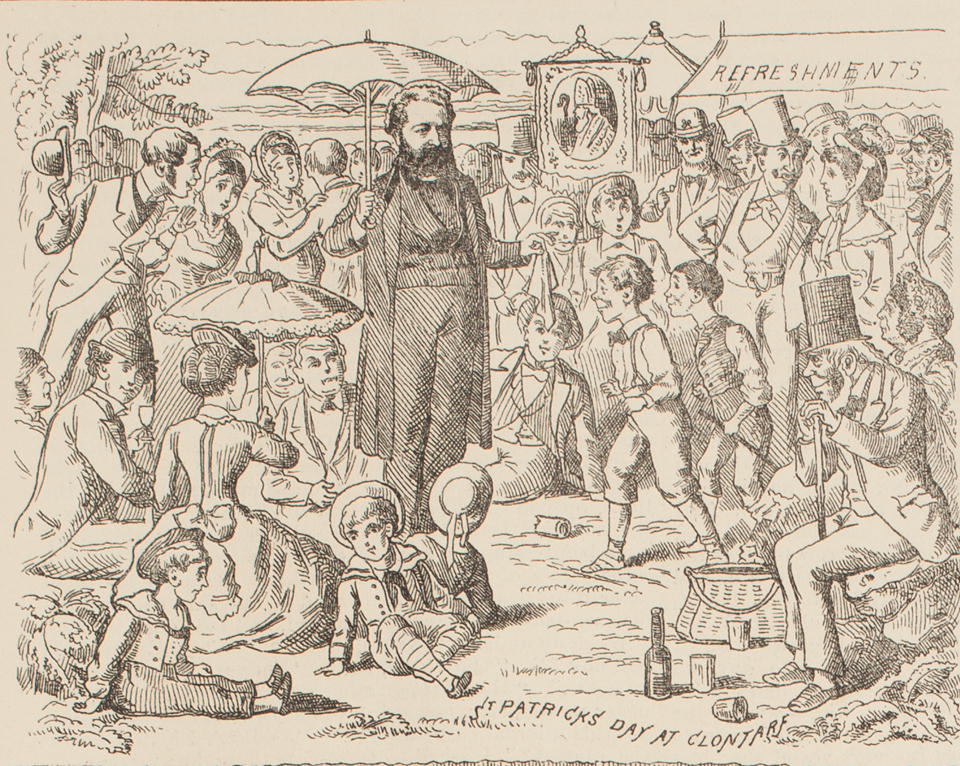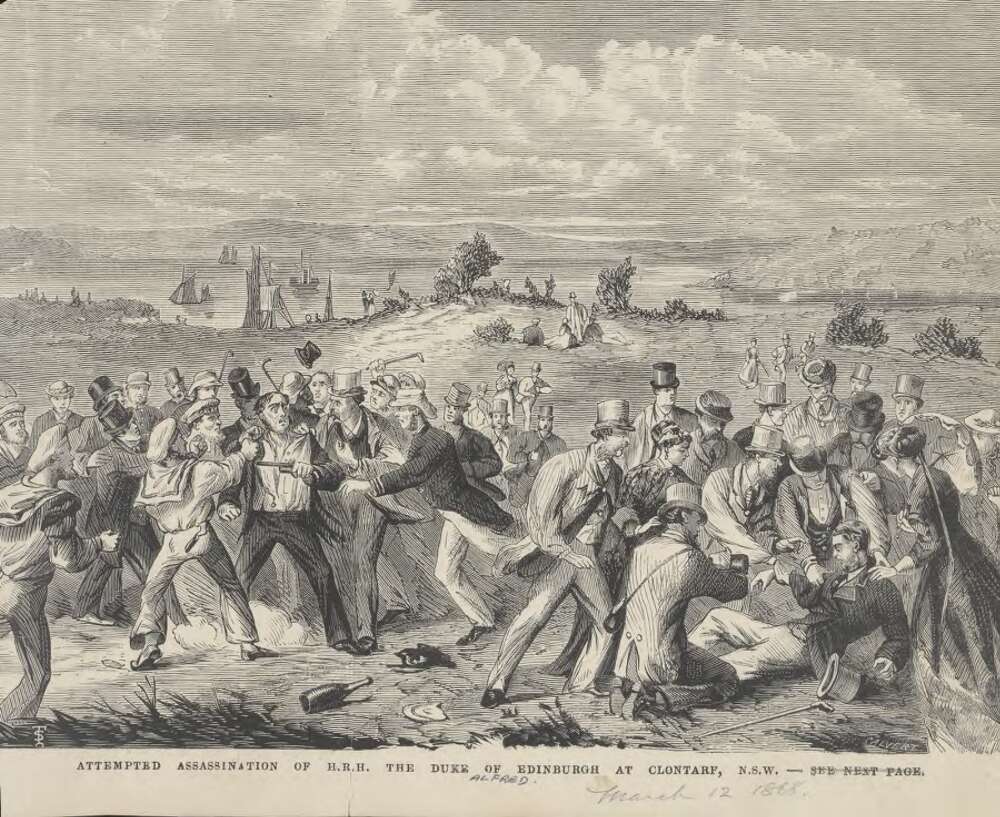The Dictionary of Sydney was archived in 2021.
Clontarf
Citation
Persistent URL for this entry
To cite this entry in text
To cite this entry in a Wikipedia footnote citation
To cite this entry as a Wikipedia External link
Clontarf
[media]Clontarf is named after the site of the Battle of Clontarf, later a fashionable watering-place near Dublin. It is located on the north-eastern side of Middle Harbour with a long, sheltered, west-facing beach.
Pleasure grounds
[media]From the early 1860s, Clontarf was the location of pleasure gardens operated by Isaac Moore, a Sydney publican, and his family. An advertisement in the Sydney Morning Herald on 30 December 1863 described the venue:
Clontarf Pleasure Grounds, Middle Harbour, formerly known as Brady's Flat. – parties wishing to engage the above grounds for New Year's Day will receive information at Mr Moore's, Custom House Hotel, Argyle-street. The above grounds are the oldest, largest, and most shady pleasure grounds in the harbour. N.B., quoits, skittles, cricket bats &c always kept on the ground.
The venue attracted large crowds on holidays. The Catholic Young Men's Societies held an excursion to Clontarf on Anniversary Day, 26 January 1864, when a band was engaged, and arrangements made for dancing. There was also an Irish piper and fiddler. Up to 2,000 people attended, and provisions and temperance drinks ran short.
Isaac Moore died on 19 November 1866. By this time the Clontarf Pleasure Grounds, run by his sons, were well established as a destination for excursions on public holidays. [1]
Assassination attempt
[media]On 12 March 1868 there was an attempt to assassinate Queen Victoria's son, Prince Alfred, the Duke of Edinburgh, while he was attending a picnic at Clontarf. The would-be assassin, Henry James O'Farrell, was hanged. The events were fully covered in the newspapers of the day, the Illustrated Sydney News providing graphic illustrations. An attempt to stir up anti-Irish feeling on the back of the event was short-lived. A Norfolk Island pine, planted to mark the place where the Duke was shot, still stands in Holmes Avenue. The Royal Prince Alfred Hospital at Camperdown was founded through a public subscription fund opened to commemorate his safe recovery. [2]
Hard times and cheap land
During the Depression in the 1930s, Clontarf Reserve and other areas between the marina and Clontarf Point were filled with a tent city of several hundred people living out the tough times. They made tents with posts from the bush covered in hessian that was coated with whitewash, lime and fat to make it weatherproof. [3]
During World War II, beachfront land at Clontarf was cheap, and at £100 pounds a block, 'you couldn't even give it away'. [4]
Clontarf Marina
Clontarf Marina is now a popular spot for yachtsmen. One of Clontarf's best-known identities was the yachtsman Ben Lexcen who had premises adjoining the marina. He was the designer of the winged keel of Australia II, which won the America's Cup in 1983, the first time a non-American boat had won. Lexcen died in 1988.
Crossing to Clontarf
[media]Land access to Clontarf is via the narrow jut of land called The Spit. There have been several ways of crossing at The Spit, from the hand-operated punt of Peter Ellery in the 1850s to the steam punt of the late 1880s, which from 1911 carried the Manly trams across Middle Harbour. The first Spit Bridge was erected in 1924, and was initially a toll bridge, but as traffic congestion grew, a replacement was built in the 1950s and opened in November 1958. However, a long-term solution to the bottleneck of the Spit Bridge has still to be found.
Notes
[1] S and G Champion, Portraits of the Pioneers in Manly, Warringah and Pittwater, the authors, Killarney Heights NSW, 1996. pp 55–57.
[2] Philip M Cowburn, 'The Attempted Assassination of the Duke of Edinburgh, 1868', Journal of the Royal Australian Historical Society, vol 55 pt 1, March 1969, pp 19–42
[3] Manly Daily 23 March 1991, p 17; Susan K Brown, 'Unemployed Camp: Clontarf Reserve 1931–1935, Manly Warringah and Pittwater Historical Society Journa,l vol 4 no 1 1991 pp 1–3
[4] Manly Daily 23 March 1991, p 1
.






